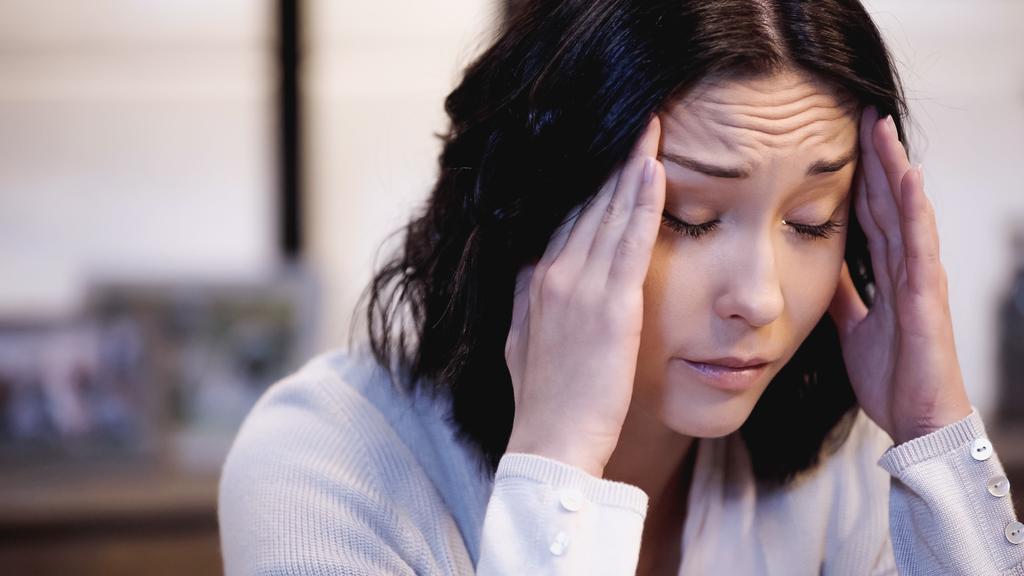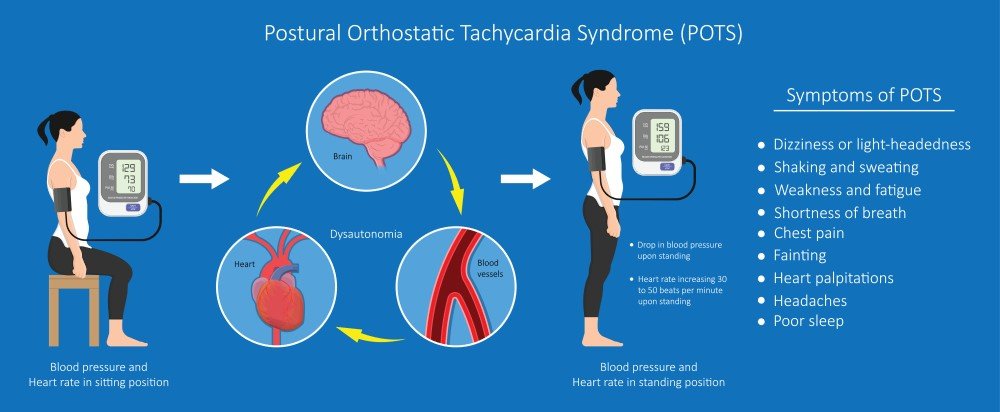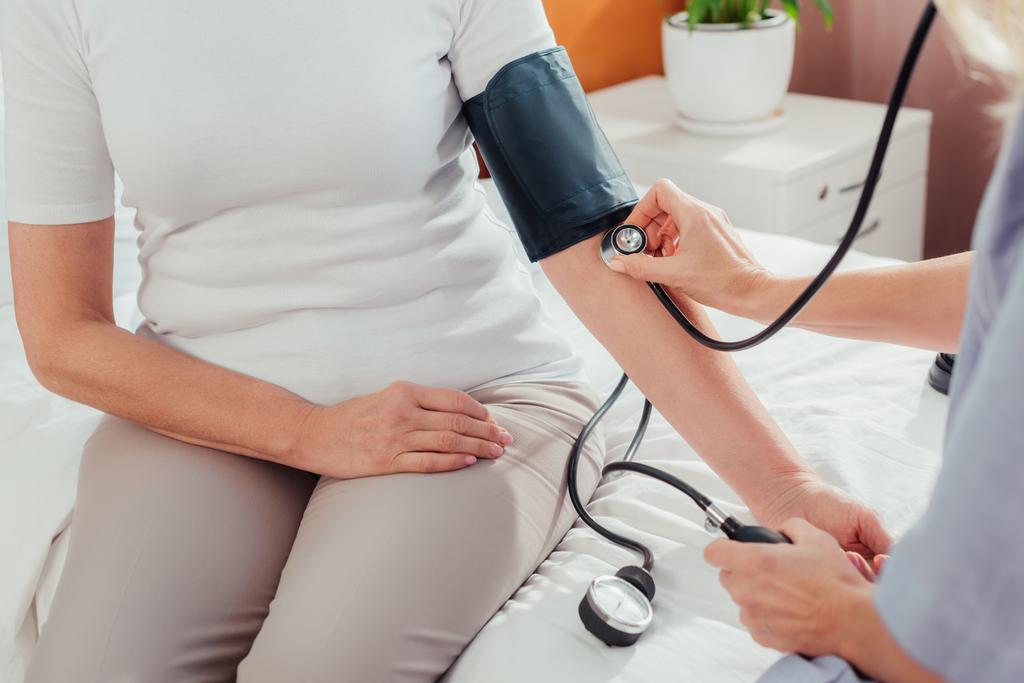POTS- Postural Orthostatic Tachycardia Syndrome is a condition characterized by an abnormal rise in heart rate and light-headedness upon standing up. This article will provide an overview of POTS, including common symptoms, causes and effective management strategies that can help those living with the condition in the UK.
What is POTS?

POTS is a form of dysautonomia, meaning it affects the autonomic nervous system which controls involuntary functions like heart rate, blood pressure and digestion. In POTS, the autonomic system does not respond appropriately to posture changes, leading to an exaggerated heart rate increase of 30 beats per minute or more within 10 minutes of standing. This is known as Postural Orthostatic Tachycardia Syndrome.
Along with a raised heart rate, symptoms commonly include dizziness, fainting, fatigue, exercise intolerance, nausea, headaches, brain fog and increased temperature in the extremities like hands and feet. Symptoms are alleviated by lying back down. POTS predominantly affects women between the ages of 15-50 years old but can occur in anyone.
Causes and Contributing Factors

While the exact causes are still being researched, POTS appears to stem from blood vessel constriction and poor circulation upon standing. This may be related to:
- Autonomic neuropathy: damage to nerves that regulate blood flow
- Hypovolemia: low blood volume
- Autoimmune activity
- Mast cell activation
- Genetics
Other factors like de-conditioning, pregnancy, viruses, trauma or prolonged bed rest can potentially contribute to or trigger the onset of POTS as well.
Managing POTS
Making lifestyle adjustments to avoid triggers and minimize symptoms is an important first step in managing POTS. This includes staying hydrated with 2-3 litres of fluids daily; increasing salt and electrolyte intake; wearing compression stockings to improve circulation; raising the head of the bed by 10-15cm; taking breaks sitting or lying down throughout the day; avoiding prolonged standing and sudden position changes; and scheduling demanding tasks for when symptoms are minimal.
Medications may be used to help control heart rate, blood pressure and other symptoms. Beta-blockers like propranolol help slow heart rate. Fludrocortisone helps expand blood volume. SSRI antidepressants can help reduce dizziness and fainting. Anti-nausea medication treats gastrointestinal issues. Pain relievers can treat headaches.
Once stabilised, gradually increasing physical activity can help rebuild strength and stamina. However, POTS patients must pace themselves carefully to avoid post-exertional malaise. Low-impact exercises like walking, swimming or recumbent cycling are usually better tolerated. Working with a physical therapist knowledgeable about POTS is recommended.

Patients may also find it beneficial to work with a POTS coach such as Rosie Bailey. These coaches have in-depth knowledge of POTS and experience creating tailored treatment plans. A POTS coach can provide 1-on-1 guidance on implementing lifestyle changes, pacing activities, improving stamina through exercise, reducing stress, and optimising nutrition. Custom exercise routines are designed to rebuild strength and endurance in a safe manner. The POTS coach also provides support with self-care techniques, advocating for needs with healthcare providers, and navigating challenges patients face in daily life. Working under the guidance of a knowledgeable POTS specialist allows patients to learn effective self-management strategies and work towards improving their quality of life.
While living with Postural Orthostatic Tachycardia Syndrome presents daily challenges, proper self-care and medical management can greatly improve symptoms and the ability to function. Lifestyle adjustments, medications, and exercise programs all play a role in an effective treatment plan.

I have postural Orthostatic Tachycardia Syndrome and I can’t handle the heat it makes my heart race and my blood pressure drop.